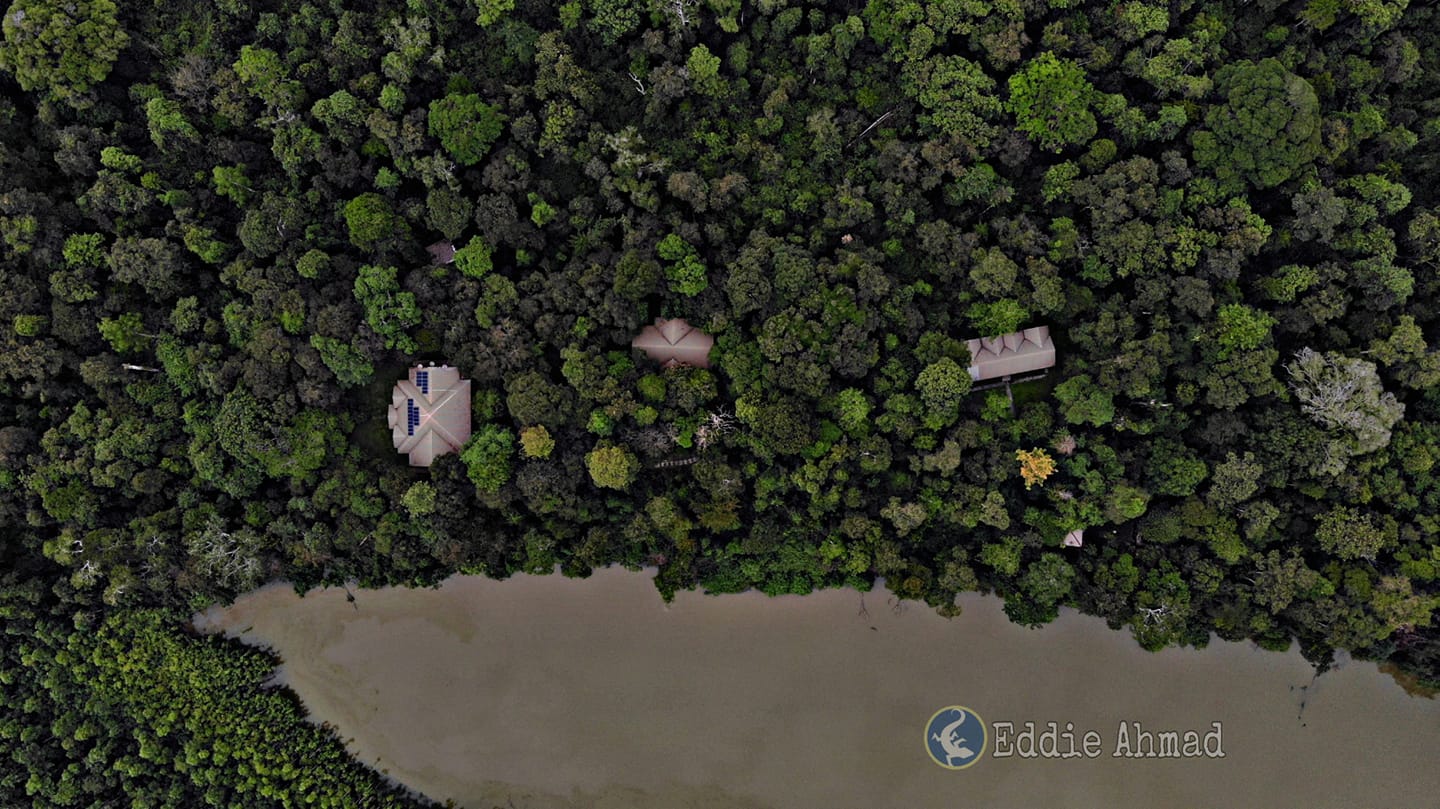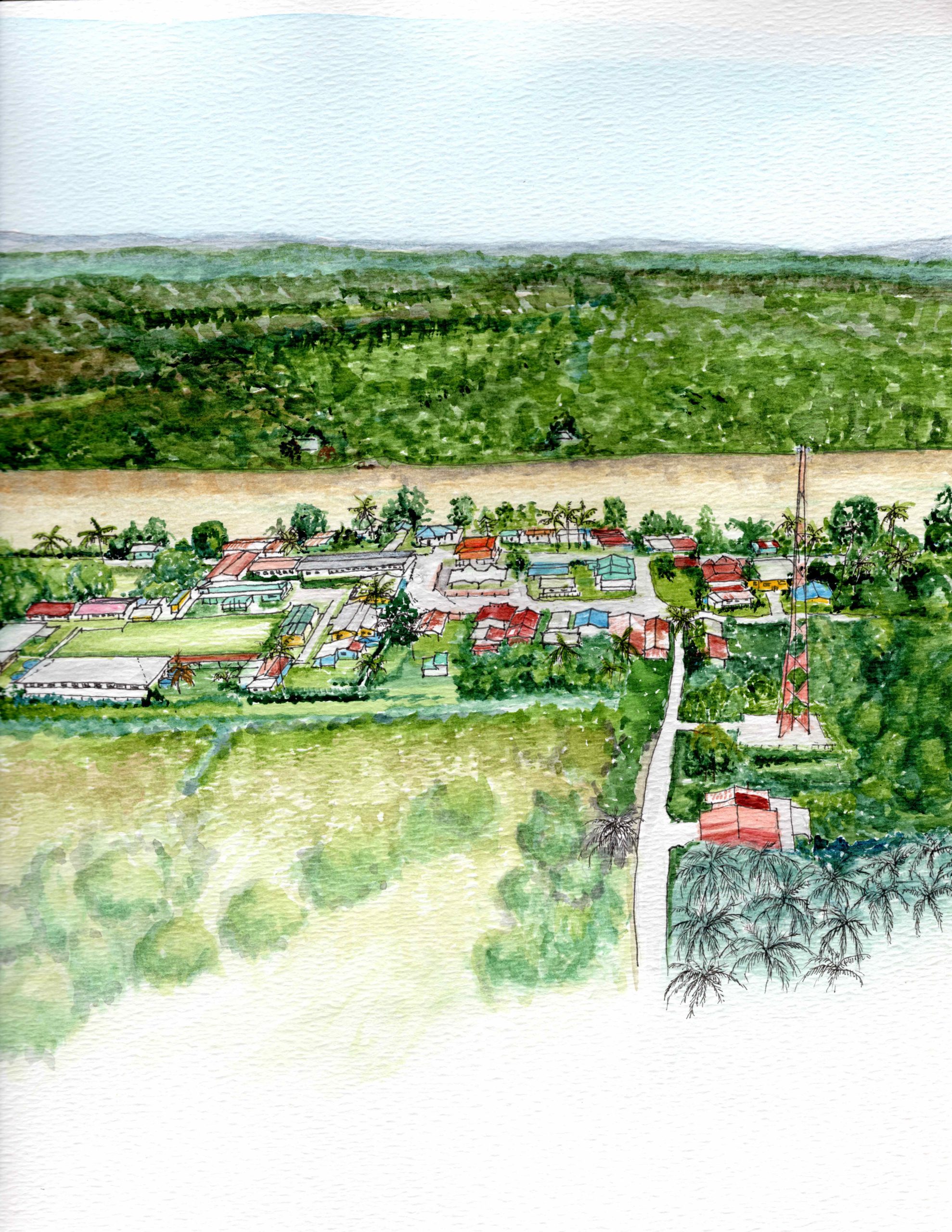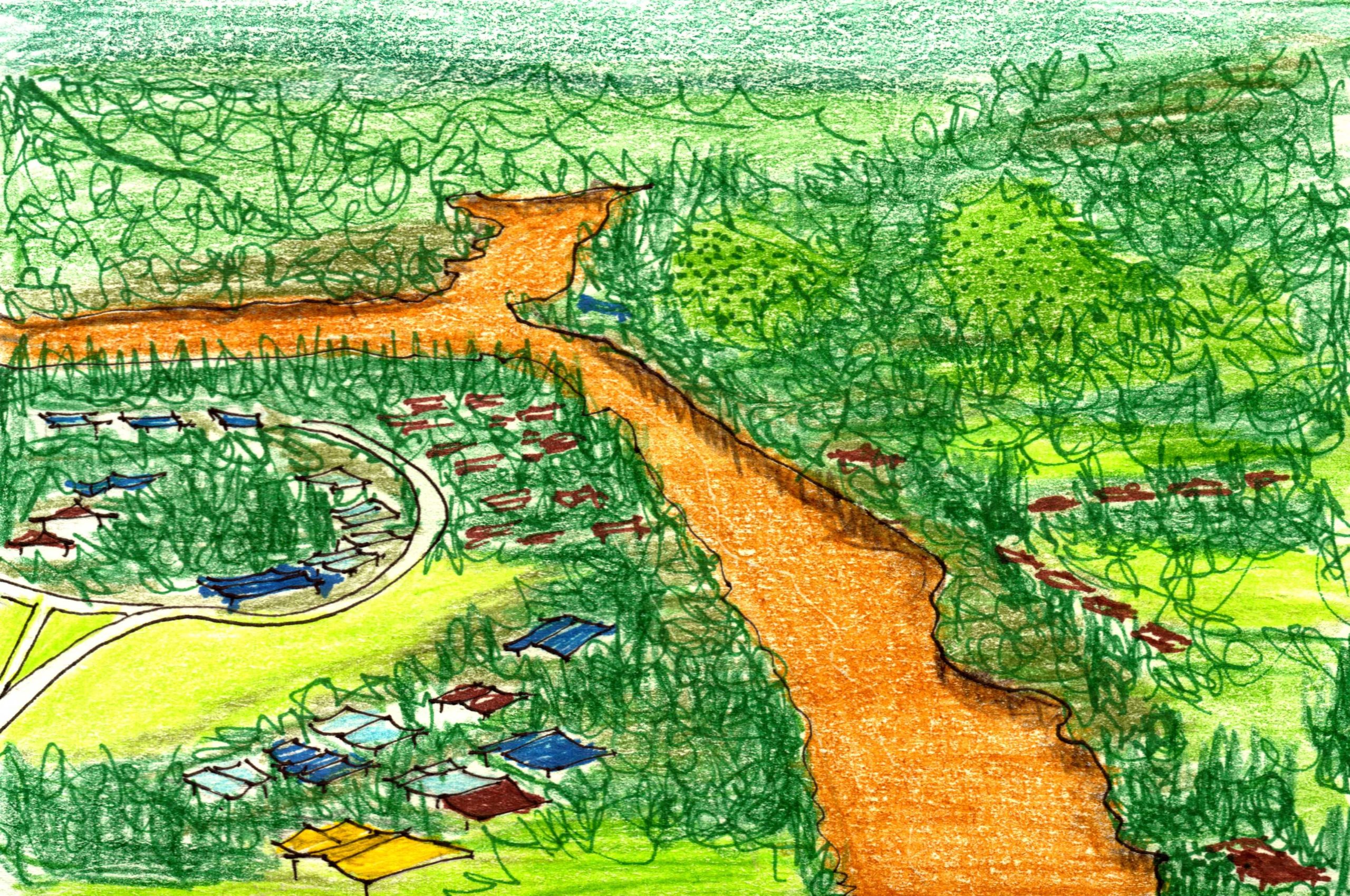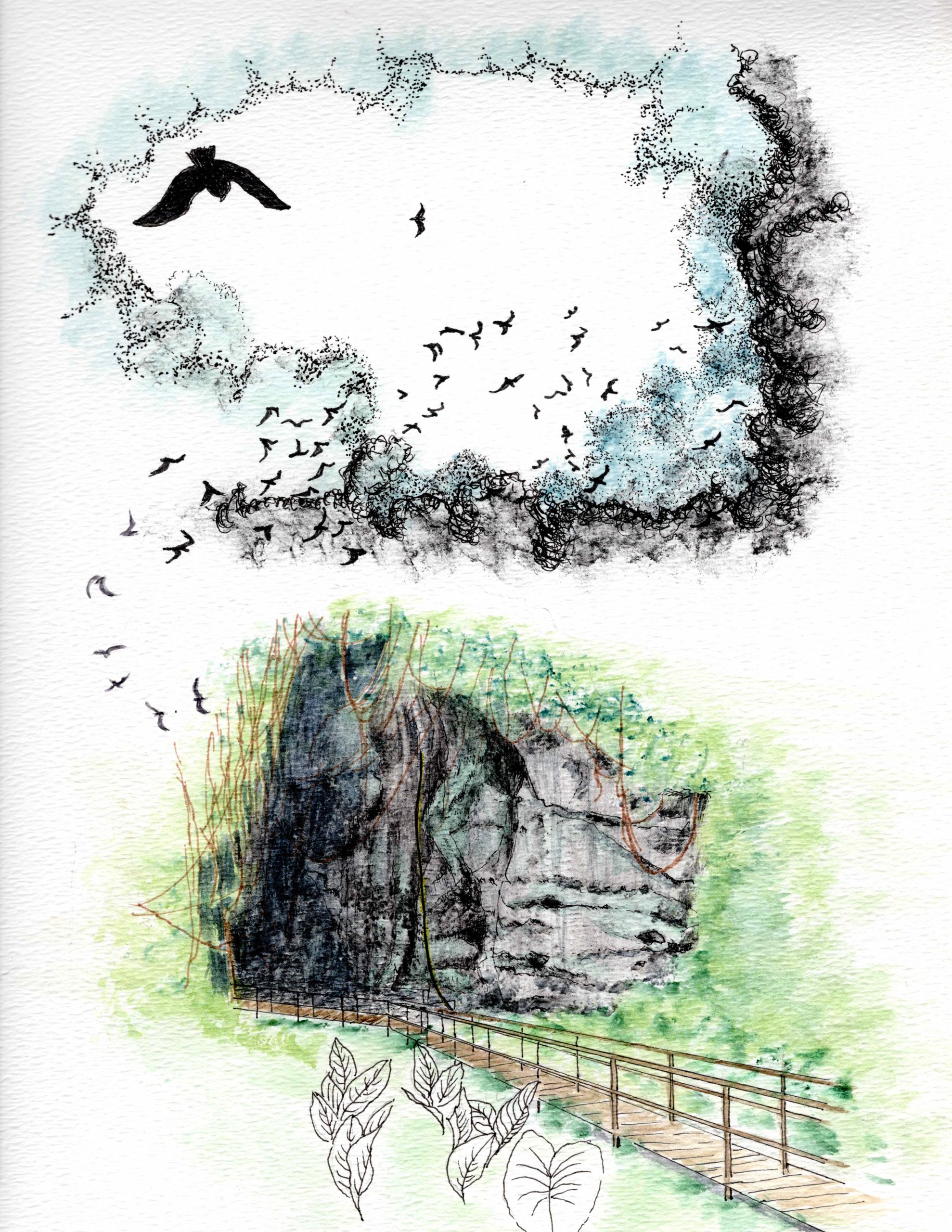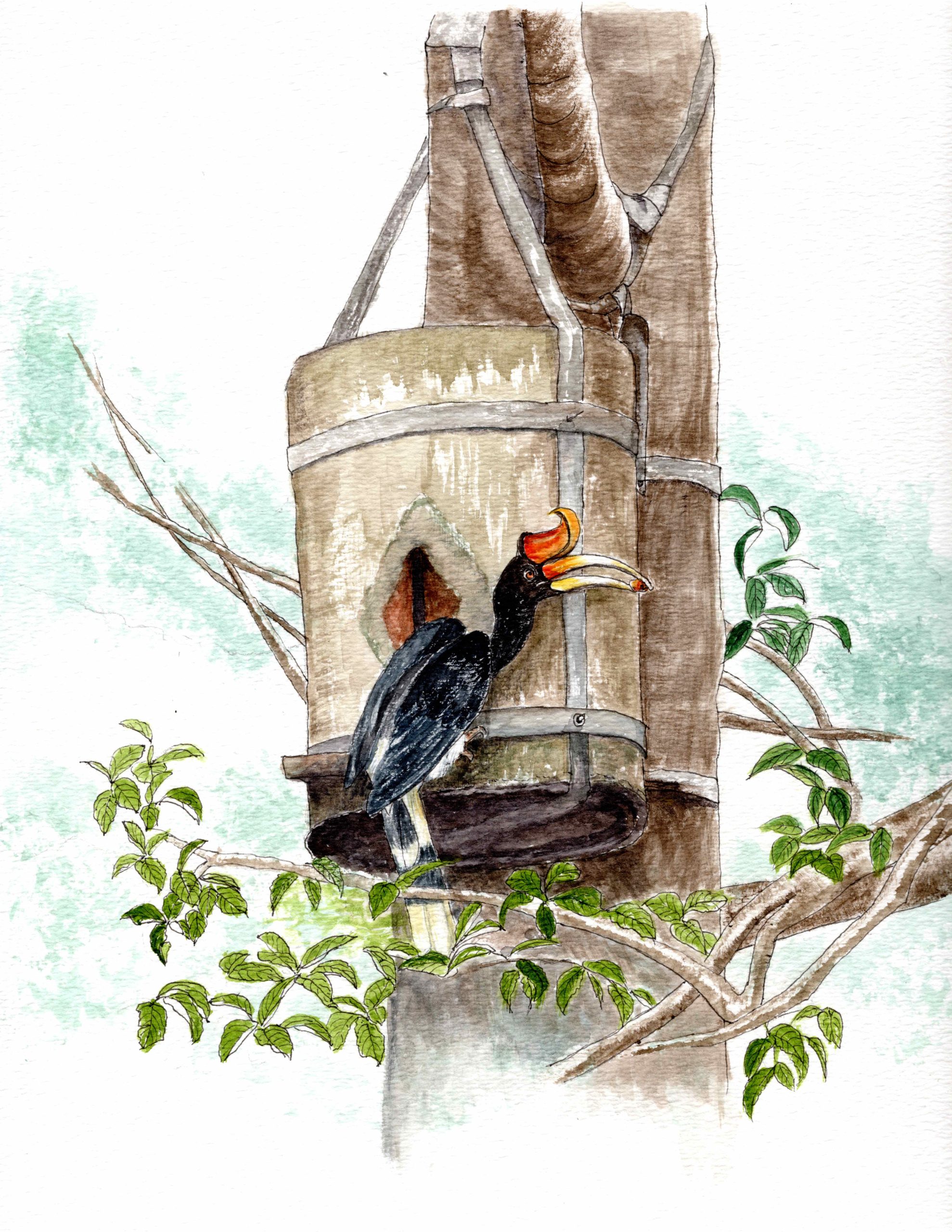HUTAN is based in the village of Sukau, but our intervention area covers most of the lower Kinabatangan, and beyond.
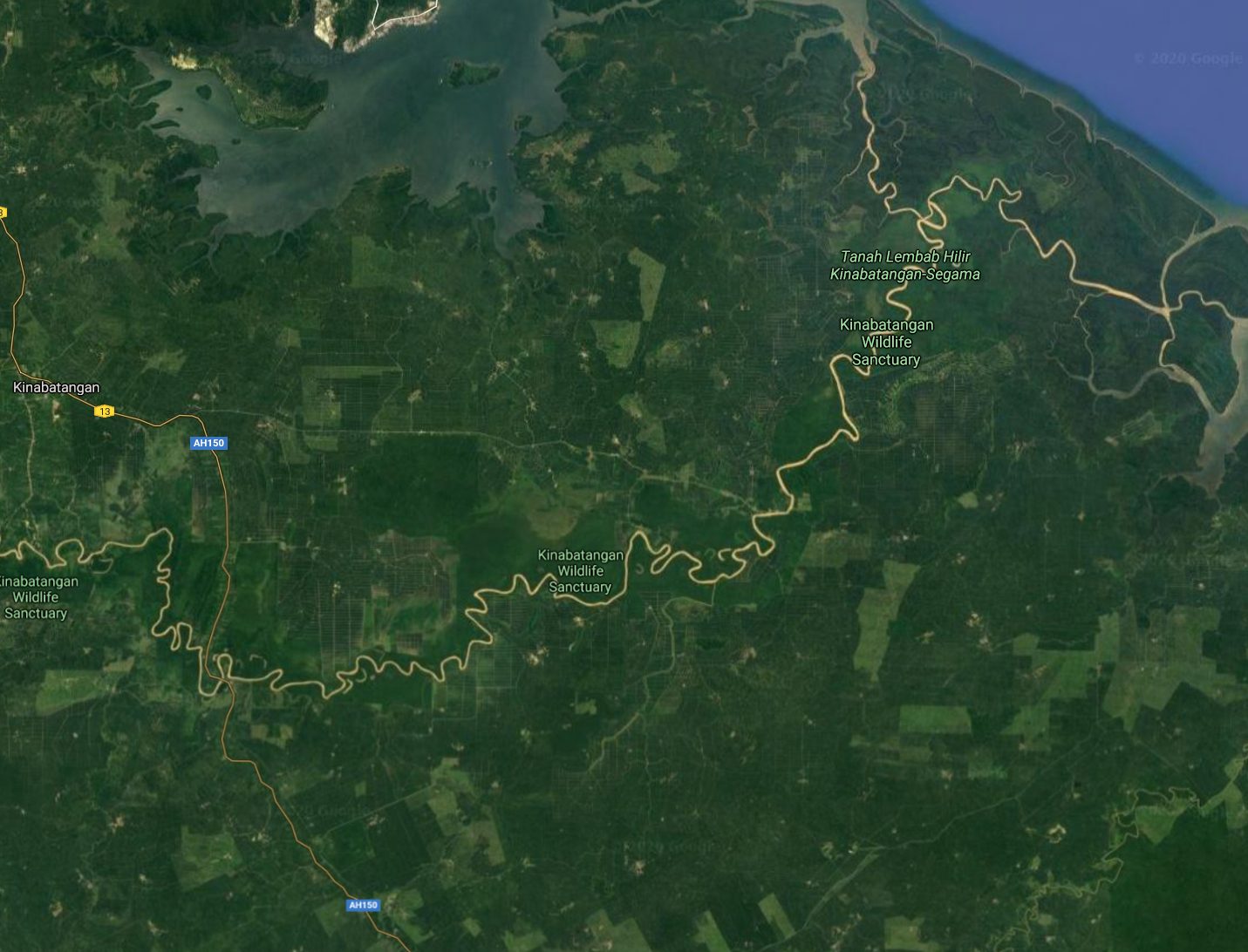
Gomantong caves
These caves are found in the most massive limestone outcrop in the Lower Kinabatangan region. The primary cave system is divided into two parts: Simud Hitam and Simud Puteh. Vast colonies of edible nest swiftlets, bat hawks, and about 300,000 bats live inside the caves. Since 500 AD, the edible swiftlet nests are harvested and traded to produce bird nest soup.
Hornbill artificial nests
Along the Kinabatangan River, a careful observer may see plastic drums up in trees. These are the artificial nests erected by HUTAN to provide breeding opportunities to hornbills. Because of past timber extraction, hornbills hardly find suitable tree cavities for breeding in Lower Kinabatangan, and their populations are declining. However, several pairs of hornbills are now regularly using these artificial nest boxes; this gives hope for their future.
Orang-utan Bridge
The destruction of large trees along small River tributaries suppressed the natural bridges that were used by orang-utans and non-swimmer animals to cross these water bodies. The HUTAN teams are setting up “artificial bridges” with ropes and webbings to re-establish the connection between riversides. Macaques and proboscis monkeys are extensively using these bridges, providing endless picture opportunities for tourists.
Swiftlet in Pangi
This very ancient coral reef is now covered with limestone forests and harbors an intricate cave system. Our teams are protecting the swiftlet colonies living there against poachers. Illegal collection of the nests of these small birds to fuel the bird nest soup trade is drawing these colonies toward extinction.
Orang-utan study site
The KOCP Orang-utan study site is about 800 ha; it is located within Lot 2 of the Lower Kinabatangan Wildlife Sanctuary. Since 1998, the Orang-utan team has followed more than 50 wild orang-utans and secured more than 25,000 hours of direct observation in this intensive study area.
Elephants
Elephants are often spotted along the Kinabatangan River during their movements or when they take a bath late afternoon. However, they now spend an increasing amount of time within the agricultural landscape dominated by oil palm plantations. You never know when and where they will show up at the river banks!
Mangroves
The mangroves of Lower Kinabatangan are a transitional habitat between the seashore and the wet forests of the floodplain. These mangroves are characterized by Nipah palms and aerial roots of Rhizophora trees. Proboscis monkeys and Irrawady dolphins are frequent sightings in this habitat, as well as orang-utans.
Danau Girang Field Center
Located upriver from Sukau, DGFC is a research center under Cardiff University and the Sabah Wildlife Department.
